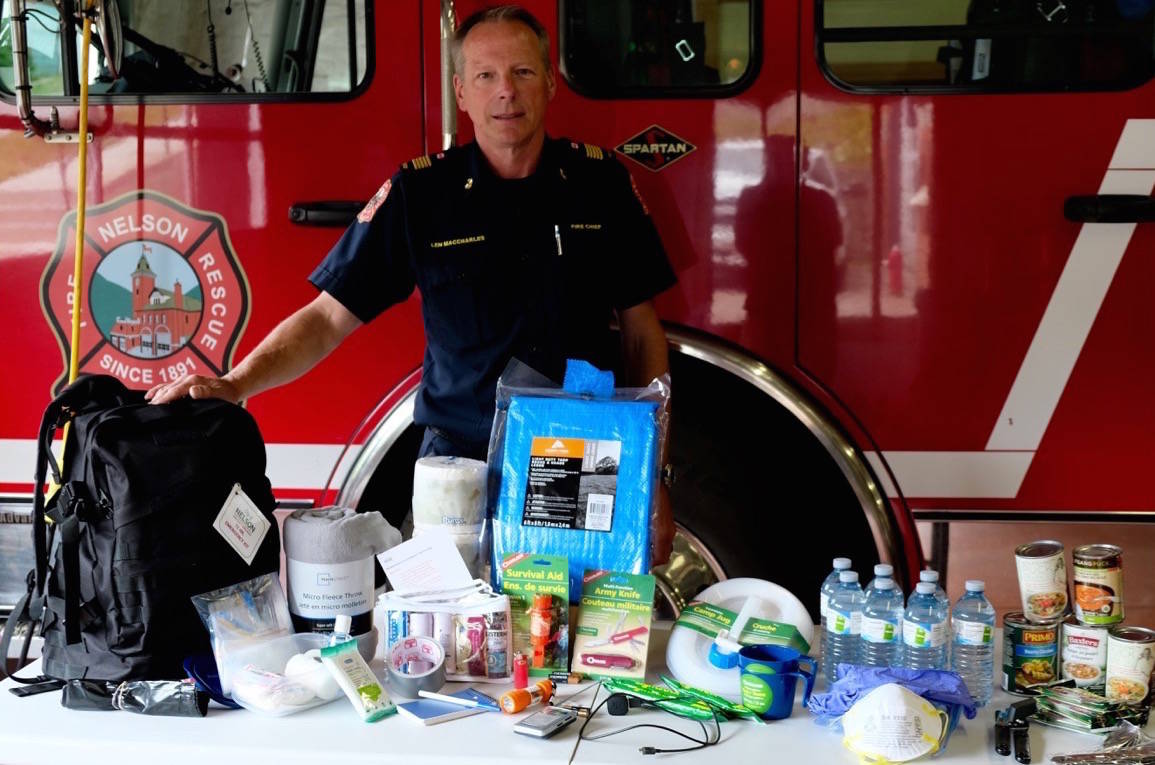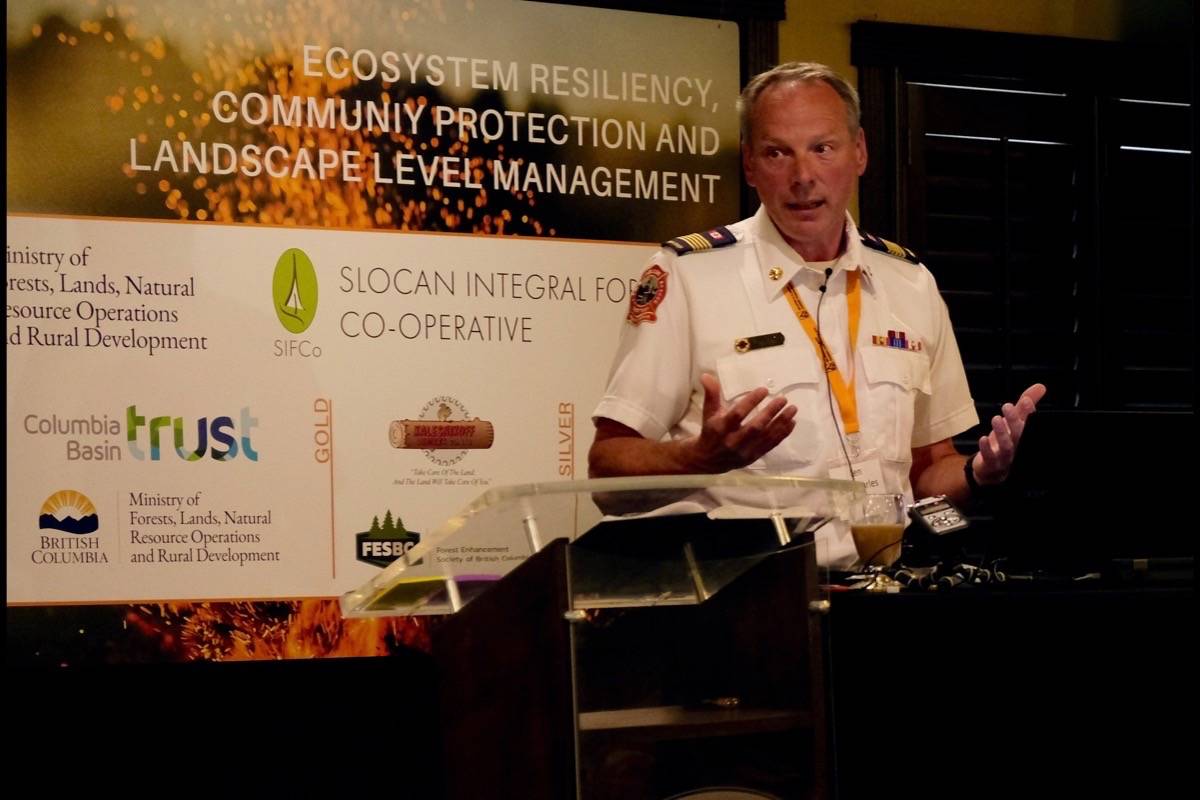Len MacCharles wants you to develop a family evacuation plan and put together a . He wants you to do it now.
“A wildfire impacting Nelson: it is not if, it’s when,” Nelson’s fire chief told last week’s Wildfire and Climate Change Conference. “It is highly likely. The impacts to health, property, the environment, people, is going to be pretty serious.”
It’s hard to predict what that fire will look like, he said.
“It would depend on the fire, the conditions, the circumstances, the wind. Was it a fire that started five kilometres from the city and making its way here? Or it is a lightning strike that struck very close?”
MacCharles was hired by city council several years ago partly because of his experience as head of emergency management in Calgary and as the incident commander at the wildfire that destroyed much of Slave Lake, Alberta, in 2013.
MacCharles said a reporter asked him at the time what it would take to put the Slave Lake fire out.
“My answer was, when this fire rolled into Slave Lake, if I had all the resources that I had in Calgary, which was 90 pieces of heavy apparatus and 1,400 fire fighters, if I had had all that in Slave Lake, a fire that was described as like a blow torch, I could not have stopped that fire.
“If a fire wants to come in to your community bad enough, it’s coming.”
The Fort MacMurray fire was not predictable, MacCharles said, because the fire danger rating was not very high at the time. But it was the perfect storm.
“It was the dryness, the wind, all those other circumstances. And the perfect storm is coming more and more often,” he said, referring to that had climate change is gradually increasing temperatures and reducing summer precipitation across the Kootenays.
Several years ago, forest fire expert Bruce Blackwell that Nelson was on his “top ten list of communities in B.C. for the next big fire.”
“That was not just an off-the-cuff remark,” MacCharles said. “He (Blackwell) has actually backed that up with studies and information. It is not just fearmongering.”
How has Nelson responded?
MacCharles said Nelson is developing a wildfire management plan, two main components of which are fuel treatment and the Fire Smart program.
Fuel treatment typically means working by hand, modifying forest vegetation by retaining large dominant trees, thinning and removing small trees, removing deadfall, pruning the lower parts of the retained trees, and burning everything removed.
MacCharles explained that the city and the Regional District of Central Kootenay have been doing in the city and on crown land outside it, but it is expensive and time consuming and has received “mixed to poor” response and engagement from residents.
He said the , which provides a free professional assessment for property owners in what they could do to reduce fire danger, has had moderate uptake in Nelson and surrounding area but is improving. near the city are not compelled to do anything to reduce dangerous fuels, and MacCharles said he is hoping for more provincial government incentives for them.
He said residents become more motivated “when there is smoke on the horizon” but interest tends to drop off otherwise.
MacCharles gave conference participants a thorough list of firefighting challenges in Nelson including a list of critical infrastructure that will need protection, including water supply, hydro, wastewater treatment, communications, hospital, schools and airport. He also talked about evacuation.
“If you say ‘evacuation’ quickly, you can move on and say it’s OK, we got it, it’s all good. But it is a huge nightmare and even with planning and trained people, it is going to be chaotic. Nelson can have up to 20,000 people, (including visitors and rural people working in town) at any given time.
“It is not inconceivable to imagine a wildfire would affect at least one of the three transportation routes out of Nelson. So now you have 20,000 people in an evacuation, trying to get out of town, all on the same road.”
MacCharles also touched on recovery.
“The economics of a wildfire going into a place like Nelson is just off the charts. We are a community of small shops. Most small businesses can go 30 to 60 days without money coming in and going out before they go out of business. You start losing too many businesses, your employment hub drops off, there is a cascading effect. Tourism takes a long time to recover, and the social and mental health impact is huge and it takes years to recover.”
The contents of a 72-hour emergency ‘Grab ‘n’ Go Kit’ can be found on the .
Related stories in the Nelson Star:
bill.metcalfe@nelsonstar.com
Like us on and follow us on




